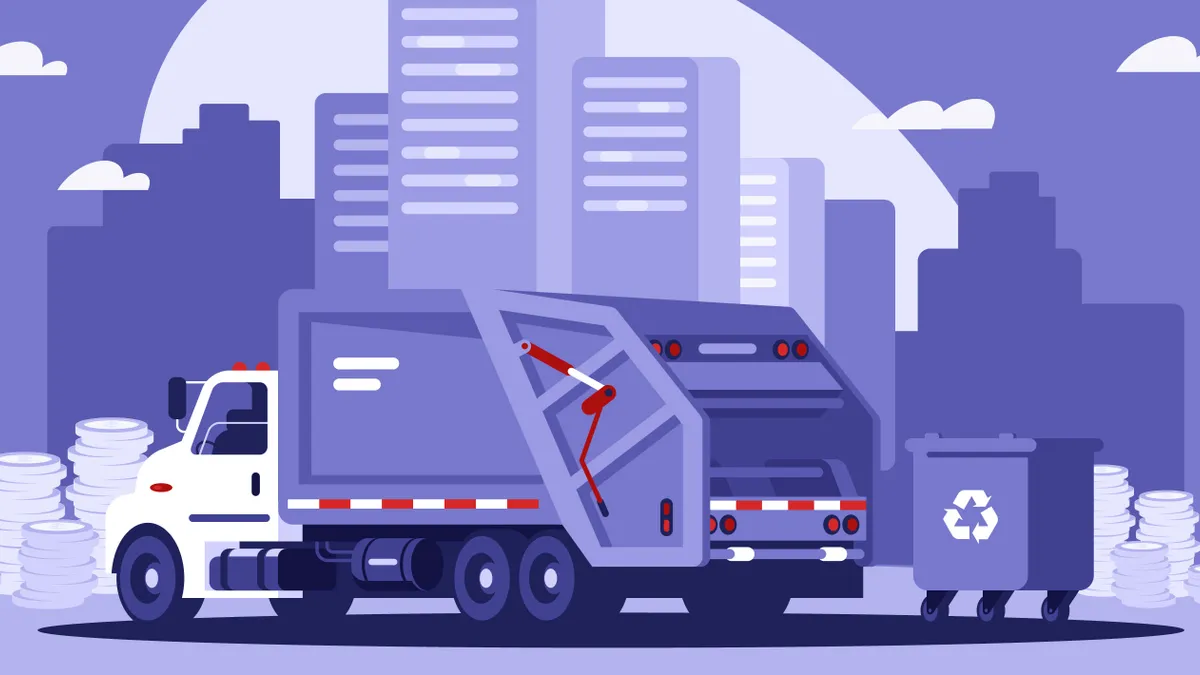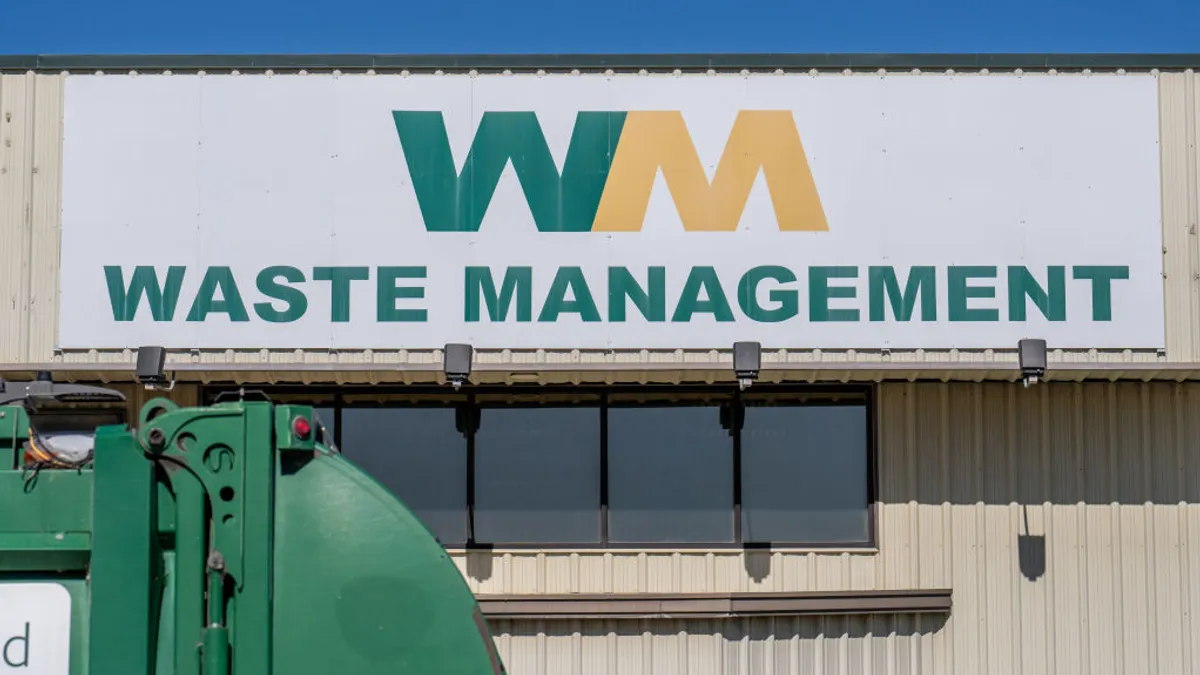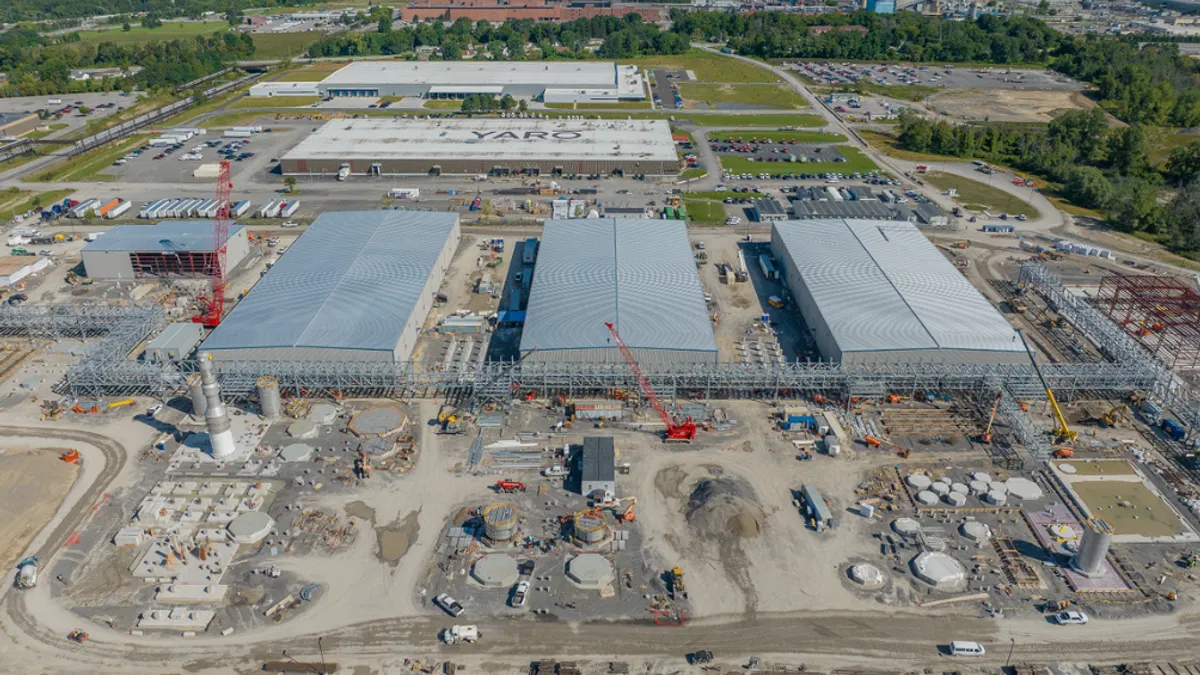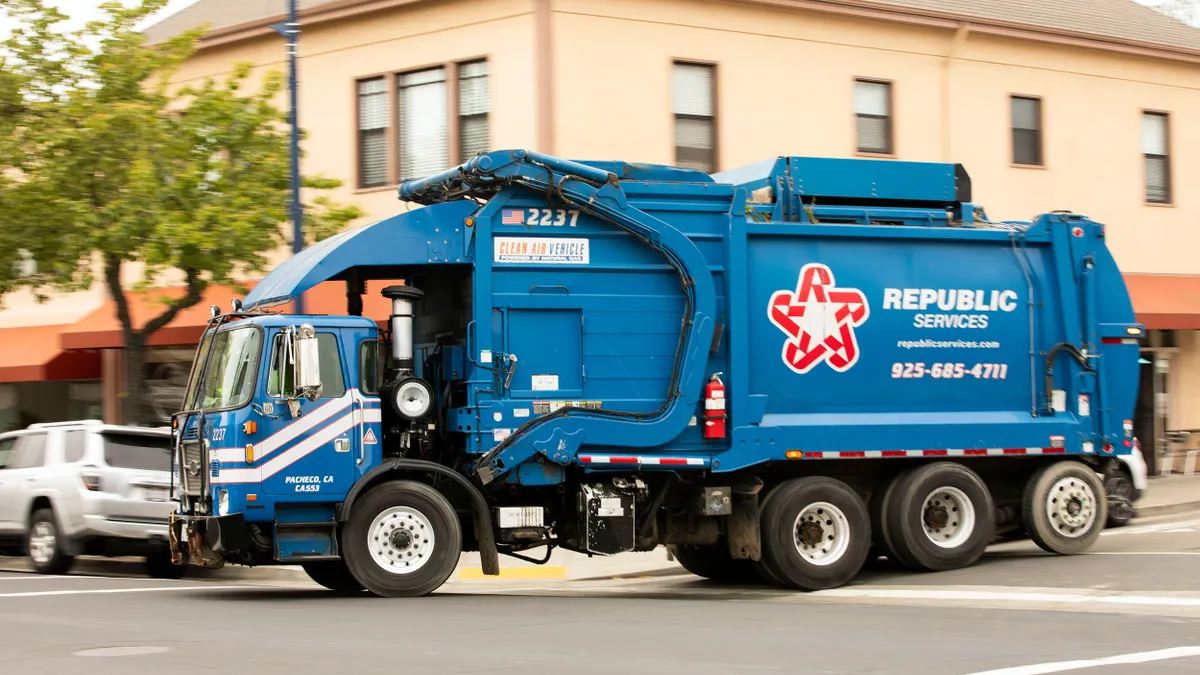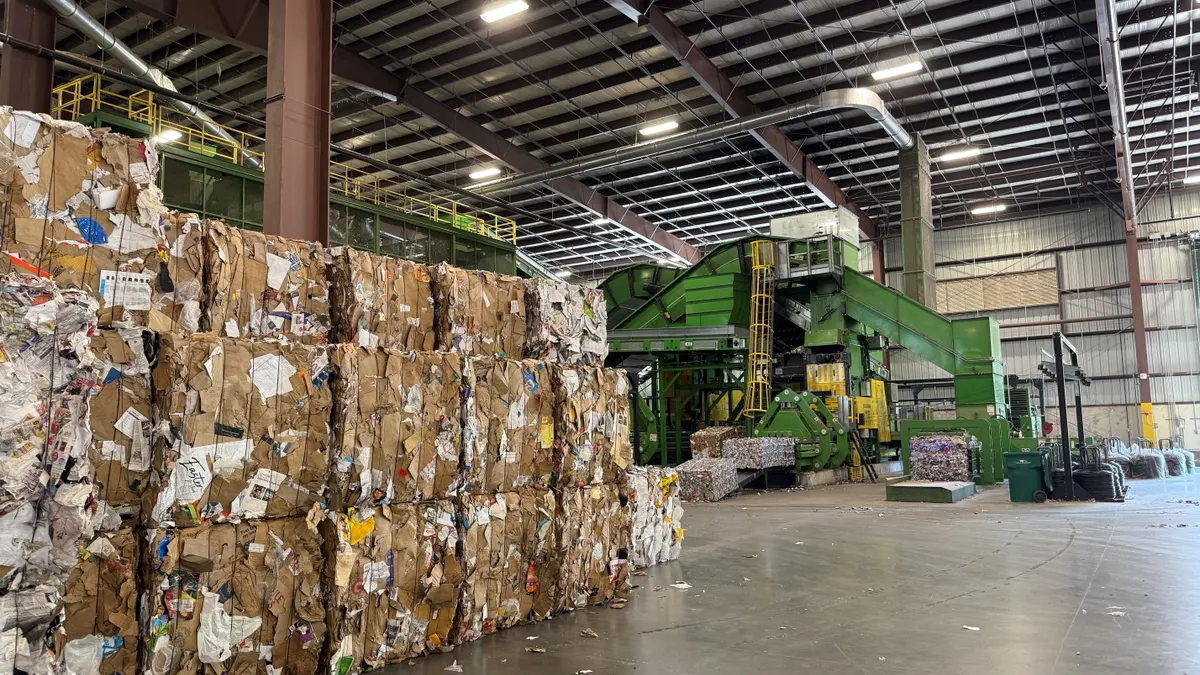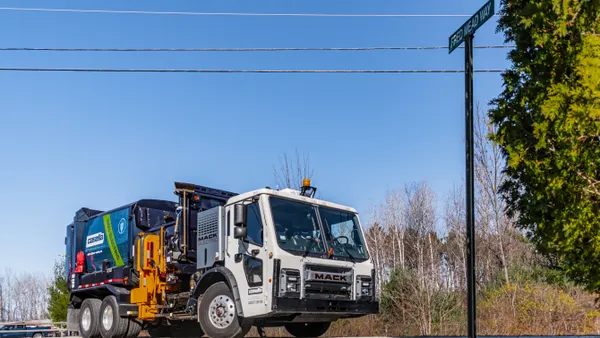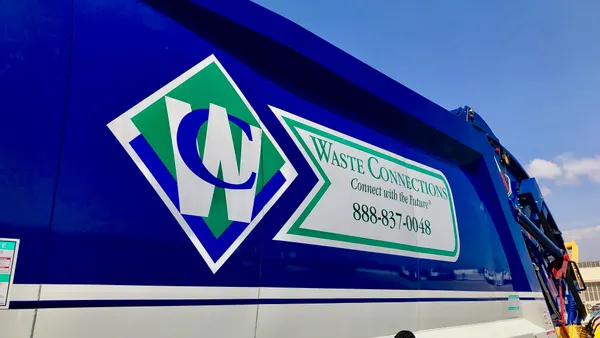Along with the many changes brought on by 2020, cities around the country have seen trash piling up on the curb, sustainability programs delayed and recycling programs disrupted. These developments are just a sample of what residents may see going forward as their local governments struggle to cope with budgets hit by the pandemic.
While some residents might be surprised by the shifts, Bob Gardner of SCS Engineers said they are to be expected. Cities with hamstrung budgets still have to provide sanitation services, but doing so within the new financial restrictions can mean that trash, recycling and other programs don’t look the way they used to.
“What we try to do is take the rose-colored glasses off,” said Gardner, a senior vice president who leads the firm's solid waste management practice. Each program costs money, and if the always unpopular idea of a rate increase is off the table, then he said maybe the programs themselves have to adapt.
The pandemic — and the dents it has put in many local budgets — has forced cities to see things differently in a matter of months. Compared to other government-provided services, solid waste management is a crucial one that is often more protected from cuts. But as many cities see revenues fall amid the pandemic, or expenses rise given higher residential trash volumes due to more time at home – and in some unlucky cases, both at once – their options are limited.
Solutions range from reducing service frequency to considering perpetual work-from-home arrangements to save rent expenses, and may force departments to try cost-saving measures they’ve never considered previously.
“No one saw this coming, and normally you don't budget for an emergency like a pandemic,” said Michael Fernandez, the director of Miami-Dade County's Department of Solid Waste Management.
Balancing act
Generally, local governments that run waste services on an enterprise system are better suited to weather an economic downturn than those that rely on a general fund, according to multiple experts. Although as the pandemic progresses, some governments that charge a fee have started to worry residents who go too long without sufficient income, along with an increasing number of evictions, could mean their revenues will drop too, according to a senior director with a national local government association.
The City and County of Honolulu's solid waste budget, for example, relies on a general fund. Filled by property taxes, that general fund now has an estimated $400 million shortage. Expenses need to be reduced by 10% across all divisions, said Lori Kahikina, director of Honolulu's Department of Environmental Services.
Already, Kahikina’s department claimed some large cost-saving victories. This summer, a reworked bulky item pick-up program – a pre-pandemic priority – cut overtime hours from 13,000 to about 8,000 or 9,000 a month. But those savings were already taken into account before asking for the 10% reduction.
So Kahikina and her team have to get even more creative. For now, the department will collect curbside recycling once a month instead of twice. The department also reconfigured routes for minimal driving time.
“We're just trying to think out of the box how we could do things better and more efficient,” Kahikina said.
Honolulu exemplifies a department reliant on a depleted general fund, but fee-based services aren’t necessarily insulated from budget issues.
The Phoenix Public Works Department hadn’t had a rate increase for solid waste collection in 11 years when, on Feb. 11, the city council approved the measure. The first rate increase started in April. Fees for solid waste will go up a total of $6.40, plus 2% each year for inflation, for the next two years.
“If it weren’t for those actions taken in February, the story I would be telling you would be a lot different,” said Ginger Spencer, director of the Phoenix Public Works Department. However, the department still anticipates cutting back on expenses this fiscal year and potentially beyond.
From March to June of this year, the department's solid waste arm spent $1.9 million more than anticipated on curbside and bulk trash collection efforts. When Spencer and her department informed other officials of these costs, the city provided $1 million from coronavirus relief funding to compensate. Spencer and her team calculate the same services could cost another $2.34 million through December, and anticipate cutting and reducing their existing $147 million operating budget to allocate the funds unless additional relief funding comes through.
Phoenix spent more on curbside collection because of soaring trash and recycling volumes, all while the department had to purchase more personal protective equipment for employees working the routes. Many local waste departments have run into a similar problem: Even if the amount of money available to work with hasn’t changed, the cost of providing basic services has increased during the pandemic.
“No one saw this coming, and normally you don't budget for an emergency like a pandemic."

Michael Fernandez
Director, Miami-Dade County Department of Solid Waste Management
In Miami-Dade County, some of those extra costs have been offset by commercial and municipal customers bringing higher volumes of material to disposal sites. Curbside collection operates on an enterprise system, and the drop-off sites charge tip fees. That latter revenue system has seen a healthy boost during the pandemic, said Fernandez, though the increase isn’t enough to offset all the added expenses of collection, processing, recycling and disposal – much of which the department runs itself – along with PPE costs and overtime rates for staff working more often. Fernandez hopes that money from prior coronavirus relief funding will make up the deficit.
In some cases, though, the residential trash boom helped public works employees argue for a budget increase.
Greensboro, North Carolina, pays for curbside collection through its general fund, and the effort received as much money for the current fiscal year as it did the previous one. But for four years, Deputy Director of Field Operations Chris Marriott and his colleagues have begged for new additions to a fleet that hadn't been expanded since 2011. An estimated 16,000 homes have been added to their weekly routes in that time. Marriott’s argument was pretty straightforward, he said: “We’re dying here, and we’re killing our trucks.”
COVID-19 strengthened the case. The department didn’t have enough vehicles to handle surging curbside volumes, and wanted to avoid two people being on each truck, so it temporarily suspended yard waste pick-up this spring.
When officials learned how slim the department's operating margins were when it came to trucks, plans changed. Funding to accommodate a few more vehicles will kick in during the 2021 fiscal year.
Since it’s not clear how long residents may need to work from home and socially distance, it’s also hard for waste departments to anticipate how long residential waste services will continue to cost more than normal.
Curbside collection volumes have settled somewhat since the early months, when multiple companies and cities were reporting levels of around 20% more than usual. Nationally, rates are now about 5% to 10% higher than pre-pandemic volumes, said David Biderman, CEO of the Solid Waste Association of North America (SWANA).
At the same time, Fernandez said, these “new normal” waste levels might stick around indefinitely if businesses continue to opt for work-from-home. In fact, his own department might make that choice as a way to help save on rent.
Tough choices
A more typical solution for current and future budget gaps in some areas has been hiring freezes. Some, like pauses seen in some parts of Arizona, stretched for a few months at a time, while others are still going.
Los Angeles instituted a hiring freeze earlier in the year and began a citywide buyout in November of about 2,500 employees that were set to retire soon. Those measures extend to LA Sanitation and Environment (LASAN), which has seen its budget shrink by 10% due to residents who are falling behind on payments and commercial customers that permanently closed during the pandemic.
“We have already hit the point where us maintaining minimum staffing levels has become a challenge,” said Enrique Zaldivar, director of LASAN.
Hiring freezes bring new struggles, too. Too few workers — either because of freezes or coronavirus-related absences — mean the increasingly limited staff end up billing for more expensive overtime hours.
In some cases, insufficient staffing can leads to trash lingering on the streets or programs like recycling getting temporarily suspended. Philadelphia and Baltimore were among the cities to struggle with this over the summer, while others such as El Paso are dealing with it now. Baltimore's recycling program has been down since August, though was recently forecast to return in late January.
More importantly, employees can only work so much. LASAN wants to avoid overnight shifts as the risk of accidents grows exponentially in the dark. Biderman also pointed out overworked and overtired employees run a higher risk of safety incidents.
Other larger expenditures — including those that would help with sustainability goals — could get cut, too. In January of this year, LASAN committed to having an all-electric fleet by 2035 and said all vehicle purchases would comply with that goal starting in 2022.
“There's still a ray of hope that, if we have the right foundational financials, later in 2021, we may still be able to bond the purchase of electric trucks and spread it over a longer term,” Zaldivar said.
For now, the city has halted buying new trucks and anticipates spending much of 2021 in the same position. It’s also possible the department will eventually purchase compressed natural gas vehicles instead, as they’re cheaper than electric.
Across the country, other sustainability measures took similar hits. New York City suspended its curbside organics program for the time being, a system that pre-pandemic cost more than it brought in. Philadelphia also disbanded its Zero Waste and Litter Cabinet which was meant to help lead the city's move toward 2035 sustainability goals.
Local recycling also might take a hit in different areas, continuing a years-long trend due to financial shifts. Whether a community prioritizes the service depends on local politics and culture, Gardner of SCS said. “It really does come to values. How important are your values relative to money?”
Honolulu is intimately familiar with this problem. Island living means limited landfill space, but the city pays to have glass and aluminum shipped to the continental U.S.
“I honestly don't know where the product is going anymore,” Kahikina said. “For all I know, [the contractor] is selling it and it's going into another state landfill.” If that's the case, she would prefer the materials head to an incinerator on the island instead.
In Phoenix, recycling will also stick around. The city held a goal to be zero waste by 2050 and divert 40% of its waste from disposal by 2020. Phoenix has slid backward on that goal, but Spencer said the waste department plans to set annual waste reduction targets in the new year to build up to the 2050 target.
On the other hand, Gardner heard some city managers at a recent National League of Cities meeting recommend eliminating recycling programs because they could no longer make a business case for keeping the effort going.
Uncertain future
As officials look for a way forward, resolutions to their various waste-related pains mostly just involve more funding — whether it’s delivered via programs tailored to tackle several local issues at once or more direct allocations of cash.
One way to help local recycling stay alive might be through a system that President-elect Joe Biden has considered, which would combine climate change legislation with green jobs and infrastructure. The United States Conference of Mayors (USCM) hopes for a program similar to the Energy Efficiency and Conservation Block Grant Program. In 2009, that initiative doled out $3.2 billion to cities, states, tribes and territories to achieve energy use reductions and conservation goals while creating new jobs in the process. A revamped version of this grant system could potentially help cities hire employees charged with, for example, reducing recycling contamination levels.
Federal funding could also become essential if the U.S. EPA actively pursues a goal of reaching a 50% recycling rate by 2030, which Administrator Andrew Wheeler announced in November.
“If the federal government is going to establish a goal of recycling 50% of municipal solid waste by 2030, it should also provide local governments with the resources to achieve that objective,” Biderman said. The Save Our Seas 2.0 Act, signed by President Trump last week, also offers some grant funding for municipal recycling efforts.
Waste or recycling-specific funding is secondary, however, to flat-out financial aid. The “Big Seven,” a coalition including the USCM and six other state and local government organizations, supports the passage of the federal Heroes Act or similar programs. SWANA is among industry groups that similarly support legislation to bolster state and local budgets, Biderman said.
Lost hotel, tourism or restaurant tax revenue doesn’t change the fact that cities have higher demand on other basic services, like first responders or waste removal.
Even the more unexpected services some waste departments provide have seen increased expenses. Miami-Dade provides mosquito control, a service paid for out of the general fund. Fernandez doesn’t expect the county to reduce that budget, but 2020 was a costly year for the service, with more residents requesting inspections than normal.
And even before the pandemic, city waste budgets operated on a thin margin around the country.
“I've worked with a number of cities and I have not seen anybody who is flush with cash,” Gardner said. “They're always having to go to city council and kind of fight, even if they're enterprise funds.”
It’s not clear how long the collision of reduced revenue and higher operating costs — “a bad perfect storm,” as Biderman called it – will last. When or whether vaccine rollouts boost the economy remains to be seen, and whatever local government aid that might come from Congress or the Biden administration next year is still undefined.
For local leaders looking for advice on how to cope for the foreseeable months or years, the Miami-Dade County Department of Solid Waste Management offers one model for dealing with the unexpected. After all, it leads annual post-hurricane cleanup for the area.
“Be prepared to make solid adjustments on the fly,” said Fernandez. “You got to continue motivating and supporting your staff.”
The difference, however, is the Federal Emergency Management Agency reimburses Miami-Dade for a majority of those hurricane costs. For cities dealing with the disaster of COVID-19, it’s not clear if federal relief will ever come.


